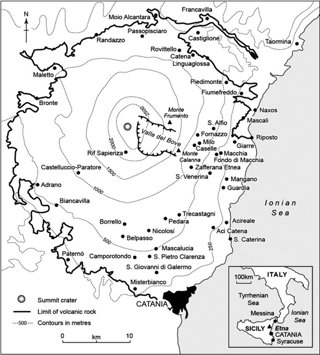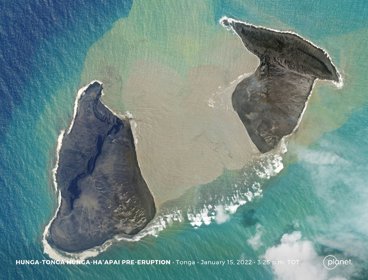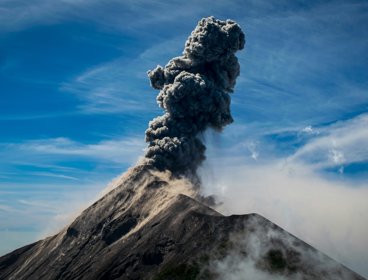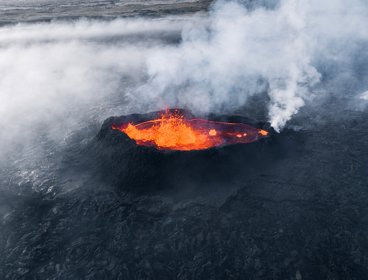What happened in February 2021?
Mount Etna on the island of Sicily erupted for the first time this year. It has largely been dominant for the past 2 years with the last major eruption in 1992. Mount Etna is one of only 1,500 active volcanoes around the world. Italy is the only country on mainland Europe with active volcanism. Mount Etna is Europe’s highest and most active volcano.
The lava type erupting out of Mount Etna is viscous and sticky, therefore it is slow moving. As a result, Etna has killed no more than 77 people in the last 2,700 years due to the lava speed and nature of the eruptions. However, it is still dangerously close to the local population.
Etna is a stratovolcano with strombolian eruptions. A stratovolcano is otherwise known as a composite volcano and can be very dangerous. BBC Bitesize give an excellent explanation (with diagram) of such a volcano and the USGS give a good short definition in their glossary pages.
The eruption
On Tuesday 16 February, Mount Etna erupted sending lava and ‘orange smoke’ several hundred metres into the air. Flights into and out of Catania have been suspended as the surrounding airspace has filled with volcanic ash. Nearby villages on the slopes of the volcano have also been covered in falling ash with 3 town in particular being monitored closely by the emergency authorities: Linguaglossa, Fornazzo and Milo, all highlighted below.

Mount Etna as seen from Catania, Europe’s most active volcano © Guardian photograph: David Anastasi
Volcano Discovery reported that the ‘paroxysm’ foundation eruption on Tuesday begin to erupt from a new SE crater, at around 11pm local time. By 1am on Tuesday night the eruption had reached its peak with tall lava fountains shooting up 500 metres into the night sky.
Lava flows have been reported heading both eastwards into the Valle del Bove (see map), towards Milo and Fornazzo, and south into the Torre del Filosofo.

Why are there so many settlements around Mount Etna?
There are several reasons why people choose to live near tectonic hazards, such as volcanoes. Mount Etna is a perfect example of why people are attracted to such dangerous areas. Increased monitoring of volcanoes and earthquakes enables people to remain near volcanoes, a lack of alternative options limited by family or poverty or no perceived risk are often cited as reasons for proximity to hazards. In the case of Mount Etna, the chief reason is fertile soils.
More than 20% of Sicilians live on the slopes of Mount Etna because of the volcanic fertile soils. In fact, the land around the volcano is extremely fertile — perfect for growing vegetables, citrus fruits, and grapes (for wine). Recent temperature rises have even allowed famers to grow papaya, normally associated with tropical climates. Some suggest up to three-quarters of Sicily’s crops are grown in the immediate vicinity of the volcano.
Further reading
Eruption footage, thick ash clouds Mount Etna: Ash clouds as Sicilian volcano erupts - BBC News
Mount Etna erupts in spectacular fashion — high lava fountains and incandescent magma
How does it feel to live in Etna’s shadow? Volcano: How does it feel to live in Etna’s shadow? - BBC News
Active volcanoes How many active volcanoes are there on Earth? (usgs.gov)
Aerial footage above nearby towns
Human responses to the eruption of Etna (Sicily) during the late pre-industrial era
When life gives you lemons — Sicily’s farmers go tropical




